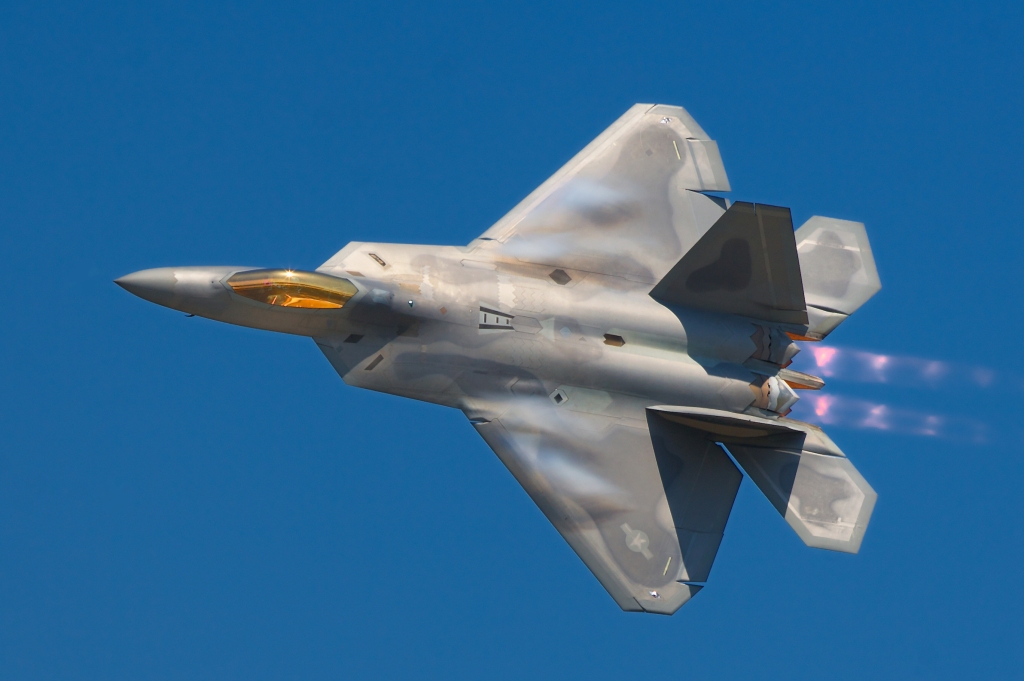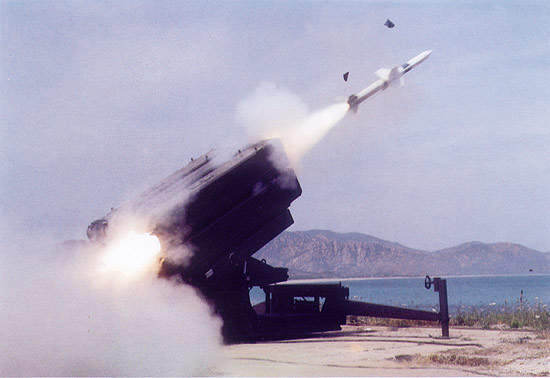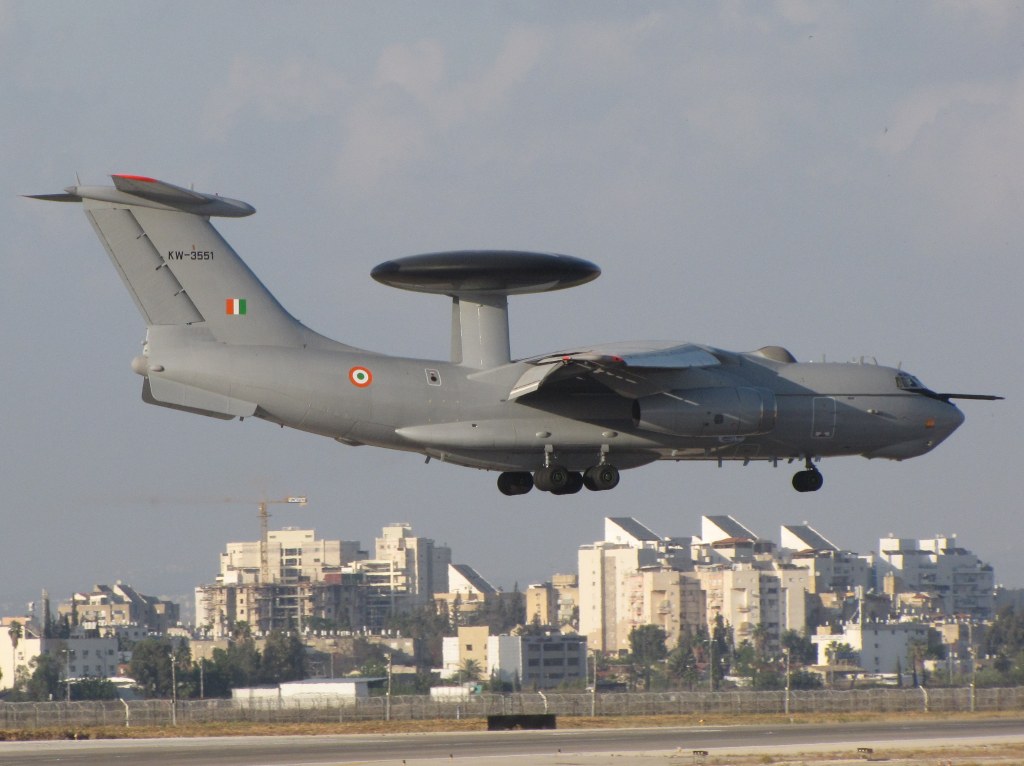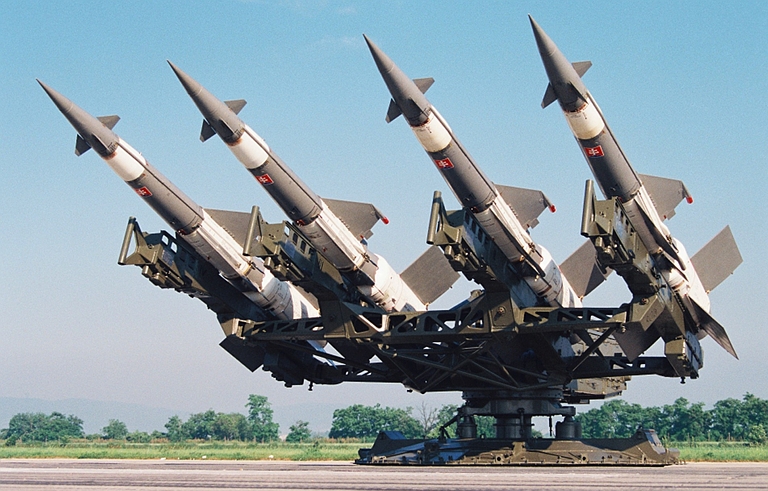Recent Chinese incursions in Ladakh and near threat of escalation, have once again got the military planners to look at Indian military preparedness. Just last year Pakistan Air Force’s (PAF) attempted a large force ‘riposte’ on 27 February 2019 in response to Indian Air Force’s (IAF) deep air strikes on targets in Balakot. The PAF launched a 24 aircraft force comprising F-16s, JF 17s and Mirage V in a wide area on India’s western border in broad day light. They included decoy formations and strike aircraft escorted by air defence (AD) fighters. IAF immediate response included 8 AD aircraft made up of SU-30 MKI air superiority fighters, Mirage 2000 multi-role aircraft and MiG 21 Bison AD fighters. IAF quick response prevented PAF aircraft from crossing the Line of Control (LoC) dividing the two countries. However PAF fighters released H 4 Stand-off glide bombs from within their own territory that fell near Indian army formations in Nowshera-Rajouri sector of Jammu and Kashmir. In the ensuing air battle one MiG-21 piloted by Wg Cdr Abhinandan chased an F-16 into Pakistan territory and shot it with an R-73 missile. In the process his Mig-21 Bison was shot by a PAF aircraft or ground fire. The air battle was supported by airborne early warning and control systems (AWACS) of both sides. This was the latest aerial event related to the air defence of India.

Inter-continental operations were possible in the World War II because of maturing of air power which in a great way decided the outcome of the six year war. The air defence of Britain actually became the turning point when German offensive against Britain was thwarted through better tactics and newer technologies. Air defence success or failure in the Arab-Israeli wars of 1967 and 1973, Bekka Valley operations decided the outcome of wars. AD operations played a significant role in the victory in 1965 and 1971 Indo-Pak war. Air opeartiond dominated the wars in nthe gulf region. The coordinated 9/11 aerial attacks against United States by al-Qaeda have brought a new dimension to the air threat. Meanwhile, the AD fighter has become faster, more agile and stealthy. World is engaged in developing AD counters to the ballistic and tactical missile threat. The proliferation of inexpensive unmanned air systems has added a cheap but potent weapon in the hands of many. The threat of an aerial attack launched from space today is real. India has recently joined the club of four nations who have successfully tested Anti satellite (ASAT) capability.
Modern Airborne Platforms
The fighter-bomber aircraft remains the main instrument of prosecuting air war, and conversely also for air defence. In addition to creating air superiority for unhindered operations of surface forces, they have capability to deliver very lethal and accurate aerial weapons and the fighter fleets consume major parts of defence budgets. Since 2005, the world is making fifth-generation fighters. First among them was the Lockheed Martin F-22 Raptor. Their main characteristics are agility, super cruise, stealth, multi-function AESA radars, network-centric systems, integrated glass cockpits, fibre-optics data-transmission, multi-spectral sensors, fused situational picture, helmet mounted sights, and Precision Guided Weapons (PGM). Fighters strive to have ‘First-look, first-shoot, first-kill’ ability. Modern 4+ generation fighters are the F-16 Bock 70, Rafale, Eurofighter, Gripen JAS 39 E/F, and Russian Su-35. The just inducting, or under development 5th Generation fighters are American F-35, Russian Su-57, Chinese J-20 and J-31. India’s indigenous AMCA will also be in this category. Sixth generation fighters are on drawing boards and expected to induct in early 2030s. Other significant airborne platforms that support air operations are the Airborne Early Warning and Control Systems (AEW&C), electronic warfare platforms and aerial refuelers. More and more of these roles are gradually being taken over by unmanned or optionally-manned aircraft. All these platforms are thus part of the aerial threat.

Airborne AD Sensors
Airborne radars are the main sensor for acquiring the opposing aircraft and today it is possible at well beyond visual ranges (BVR). State-of-the-art Active Electronically Scanned Array (AESA) radars allow simultaneous tracking and attack on multiple targets in different dimensional positions. All modern fighters have AESA radars. Many including India are developing their own. India’s DRDO is working on AESA LSTAR radar for Airborne Early Warning platform and Uttam AESA multifunction radar for Tejas Mk II. AESA EL/M-2075 radar is part of the IAF’s Phalcon AEW&C system. Ultra-long-range UAV radar systems address the need for highly precise and cost-effective tools. These can fly ahead of the fighters and help early detection and weapon slewing and designation by the fighters. Passive infra-red search and tracking (IRST) sensors also form important part of aircraft suite. IRST is a generalized case of forward looking infrared (FLIR), that can today provide all-round situational awareness. Essentially the thermo-graphic camera does not give out any radiation of their own, unlike radar. This gives them the advantage that they are difficult to detect. AEW&C radars can detect aircraft, ships and vehicles at long ranges (500 km) and simultaneously perform command and control and battle management functions. Boeing 707-320 based E-3 Sentry and Northrop Grumman E-2 Hawkeye are the most used systems worldwide. The Russian Air Force is upgrading Beriev A-50 to AESA based Beriev A-100. China has IL-76 based KJ-3000 AEW&C. IAF operates the AEW&C with the Israeli Phalcon radar on IL-76. India also has two Embraer based smaller AEW&C aircraft ‘Netra’. Airbus A330 based AWACS are planned by DRDO in the future.

Aerial AD Weapons
Air-to-Air Missiles (AAM) could typically have kill range as far as 200 km. Top-end AAMs include Russian Vympel R-77 and R-37M (400 km), US Raytheon AIM-120 AMRAAM (180 km) and AIM-9X Sidewinder, French MBDA MICA and Meteor (180 km), MBDA AIM-132 ASRAAM, Israeli Rafael Python 5 and I-Derby ER, PL-15 (200+ Km) of China and Astra (110 km) of India. Some anti-radiation missiles are being converted to intercept AEW&C class aircraft. Novator KS-172 is a Russian air-to-air missile designed as an AWACS killer with a reported range up to 400 km could one day come on SU-30 MKI. In future Ramjet propelled AAMs will enable medium-range missiles to maintain higher average speed across their engagement envelope. Fifth generation electro-optical missiles are ideal against low-heat targets such as UAVs and cruise missiles. In the coming years, the development of Directed Energy Weapons (DEW) will give much higher magnitude of precision. Very narrow beams of Lasers, microwave radiation, particle beams would destroy or damage guidance systems or trigger warheads. Hyper-Velocity AAMs will be multi-stage kinetic energy weapon with speeds in excess of Mach 5. Development of Anti-satellite (ASAT) weapons “for electronic or physical destruction of satellites in both LEO (2,000-km altitude above earth’s surface) and the higher geosynchronous orbit” have been developed. India last year joined USA, Russia and China by successfully demonstrating such an ability.

Surface AD Radars
Ground based radars are important element to manage the air threat. High and medium powered surveillance radars, tethered aerostat radar balloons, missile acquisition and guidance radars, tactical battlefield mobile radars, and ship-based radars are all part of the ground sensor network. Radars such as Raytheon AN/MPQ-35 can detect high/medium-altitude threat for MIM-23 Hawk surface-to-air missile system. Northrop-Grumman AN/TPS-75 is transportable 3-dimensional air search radar. The Chinese ground based radars include the very powerful REWY-1 long range surveillance radar and YLC-18 medium range low-altitude 3D radar. Russians have the ‘Duga’ series of over-the-horizon radars, and Don-2N and Voronezh anti-ballistic missile radars. To cater for the stealth aircraft threat, the Russia, China and Israel are developing very long-range L, UHF and VHF wavelength radars. India is developing a large number of radars to cover the entire AD threat bubble over the country.

Ground Based AD Weapons
Typically the fighter aircraft backed by AWACS will cover the farthest outer ring for Air Defence. The middle distances would be covered by long and medium range Surface-to-Air missiles (SAM). The inner ring would be of the close-in weapons (CIWS) like short-range quick-reaction SAMs and anti-aircraft guns. The Ballistic missile defence requires very long range interceptor missiles such as Israeli Arrow-II co-developed with USA. There are systems like the MIM-104 Patriot to take on smaller artillery projectiles and surface to surface missiles. Short-range missiles such as SA-6 and SA-8, Hawk, Rapier, Roland, Spada 2000, and Tunguska can neutralise low-flying high speed fighters. Long-range weapons include the Patriot and S-300 systems, which have effective ranges up to 200km, and offer relatively good mobility. Very long-range system, like the Russian S-400 has a range of 400 km. Israel has some of the most potent AD missile systems. These include Arrow missile system, SPYDER, Raytheon MIM-104 Patriot, Barak-8, David’s Sling, Iron Dome and Iron Beam. The S-500 is a new generation SAM designed for intercepting intercontinental ballistic missiles (ICBM) and to attack the AEW&C aircraft. US AD systems include MIM-23 medium-range Hawk, Raytheon MIM-104 Patriot, Terminal High Altitude Air Defense (THAAD), Raytheon FIM-92 Stinger short range missile system, M247 Sergeant York DIVAD self-propelled anti-aircraft gun system, and the Phalanx CIWS. Pakistan air defence has 10 batteries of MBDA Spada 2000 low-cum-medium altitude missile with 20 km range which replaced the Crotale.

Over the years, anti-aircraft guns have improved ballistic and high explosive high-caliber shells; they are optically or radar controlled; and have very high rates of fire. However stand-off delivery of aerial weapons has reduced effective employment of guns. Man-portable missiles (MANPADS) and Quick Reaction short-range Missiles (QRM) are more extensively used. These include RBS 70 NG, SA-7 Grail, Blowpipe, Stinger, Igla and S-10 Strella class. Among the latest is the General Dynamics RIM-116 Rolling Airframe Missile which is smaller, faster, and allows for mid-flight course correction (guidance) to ensure a hit. Russian Kashtan CIWS uses both, a six barrel 30 mm Gsh-6-30 gun and the 9M311 missiles.

Surface-to-Surface Threat
Proliferation of surface to surface weapons with long range and also some with nuclear/biological/chemical warheads needs a counter. Many countries including USA, Russia, China, Israel and India have developed Anti-Ballistic Missile (ABM) and conventional SAM systems. The Israeli Arrow ABM system was very successful against the SCUD attacks. The Arrow 3 system under development will be capable of exo-atmosphere interception of ballistic missiles. Iron Dome and David’s Sling are designed to intercept tactical ballistic missiles, as well as medium-to-long-range rockets and slower-flying cruise missiles up to 300 km way. India is developing its own Advanced Air Defence (AAD) missile system. S 400 will also take on such threats.

Terrorist in the Air
The September 2001 coordinated air attacks over America by terrorists hijacking airliners and making suicide attacks against ground targets brought a new dimension to air threat. Any aerial platform or weapon going to the terrorist hands could thus have implications. Two immediate concerns are the terrorists acquiring weapon laden UAVs or surface-to-surface missiles. Motivated terrorist could train to join civil or military aviation and later indulge in a suicide attack. Terrorist has the advantage of choosing time and place of attack. While response to the threat would be conventional but better surveillance, policing, and prevention of weapon going into their hand is more important.
Air Threat to India
At the strategic and tactical levels, China’s air power can now achieve a variety of effects. Though their current concentration is on operations on the eastern sea board in South China Sea, but the same weapons will be used against India. China wants to exploit the advantage of using its tactical/strategic missile force, which is easier to use for offensive than defend against. PLAAF plans to move forward edge of the battle into the enemy territory. It will use air offensive to try keep IAF head-down. Like the IAF, PLAAF has switched to net-centric offensive air defence and greater reliance on integrated attack. China’s ambition is to build the airpower like USA for an asymmetric advantage. PLAAF is already inching towards becoming one of the world’s foremost air forces by 2030, made up of at least 1,000 ‘modern’ combat aircraft. The Russian Su-35 aircraft, along with its advanced IRBIS-E passive electronically scanned array radar system has already entered service. Of greater concern also is the offensive capability in terms of PGMs and the surface-to-surface missiles. With 19 combat Squadrons having 450 combat and over 300 other support aircraft, PAF can still push a punch. It is heavily dependent on China for all hardware and support. F-16 and JF-17 are now the main punch. Pakistan has been in talks with China to acquire J-31 Stealth fighters and with Russia for Sukhoi Su-35 air-superiority multi-role fighter. Pakistan has an evolving surface-to-surface missile force and India needs to cater for that.

Unity of AD Control
India is a large sub-continent with around 3,287,263 sq. km. of territory, land frontiers running over 15,200 km and a coastline of over 7500 km. The national airspace hence, spans a much larger sphere and is estimated to be about over 40 million cu. km. India also sits across vital inter-continental air traffic routes. IAF is responsible for Air defence of India. An Air Defence Identification Zone (ADIZ) is the airspace over land or water in which the identification, location, and control of civil aircraft is performed in the interest of national security. The zone may extend beyond a country’s territory to give the country more time to respond to possibly hostile aircraft. To safeguard India’s strategic security interests, and to institute proper air-space surveillance, India promulgates and enforces appropriate ADIZs. IAF takes inputs from the civil, Army and Navy radars, and using its own radar network, creates a consolidated air picture for AD purposes. For Situational Awareness (SA), this pictures is given to the Army and Navy at Joint Operations level.
Airspace Management in TBA
Airspace management is, a combination of air defence measures implemented primarily by the IAF with the assistance of Army and Navy in certain areas. IAF is responsible for giving AD clearance for all flights over India. Some localised leverage has been given to the Army and Navy to fly their aircraft and UAVs, by keeping IAF informed of flight details. AD of Army’s own assets in TBA is their own responsibility. Similarly Navy manages AD of own ships and assets. AD of rest of the country is IAF responsibility. Airspace command and control requires unity of control for the myriad of actions performed by the various military elements. It requires qualified people, information, and a support structure to build a comprehensive picture of the battle-space. Other field elements provide planning resources.
To avoid fratricide, the air space control (ASC) has to be established. Several types of control exist that can be used exclusively or combined to achieve the desired degree of autonomy in operations. It could be direct control by a radar or ATC controller, or procedural control through pre approved and disseminated procedures. In the TBA hostile criteria for identifying targets and coordinating fires is laid out. Air control points are designated separately for Entry/exit, en route, Orbit/holding, Contact point, Rendezvous, Egress control, Penetration, Ingress, and Return. These control procedures allow friendly aircraft to move safely throughout the TBA by utilizing predictable flight paths for positive identification. Fire support coordination allows opening areas of the battle space for rapid engagement of targets or to restrict and control fires. Permissive fire support coordinating measures facilitate attacking enemy targets. Restrictive fire support coordinating measures provide safeguards for friendly forces.

Layered Air Defence
There are areas where fighter aircraft have the clear operational advantage over surface-based systems. Surface-to-air missile systems will not be allowed to fire weapons in this area unless targets are positively identified as hostile. In the missile engagement zone, the responsibility for engagement normally rests with missiles. This could be a high-altitude or low-altitude zone. There are areas where multiple air defence weapon systems are simultaneously employed to engage air threats through sector separation. The base air defence zone (BADZ) is an air defence zone established around an air base and limited to the engagement envelope of short-range air defence weapon systems defending that base. Low altitude air defense (LAAD) assets are employed at BADZs.
IACCS
Integrated Air Command and Control System (IACCS) is an automated system for monitoring and controlling of all air operations of the IAF. For the network-centric air operations, an air situation picture is created using various sensors and they same is made available at the appropriate tactical and operational levels for controlling the air operations. The Air Force Secure Network (AFNET) communications data-link architecture enables this process. Timely and tailored and fused intelligence is integral to all operations. Among the technology requirements are the primary and secondary radars for control and situational awareness, aircraft transponders, flight data processing systems, special software for fully automated systems and conflict alerts and algorithms for possible vectoring solution. Controller pilot data link communications and operational data links (ODL) allow digital messages to be sent between platforms and ground system. Network-centric operations bring in threat of cyber warfare. India has set up a dedicated tri-service agency for handling offensive and defence cyber operations.

Air Defence assets India
Fighter aircraft are the first AD asset. IAF is currently down to 30 fighter squadrons vis-a-vis authorized 42. IAF has nearly 13 squadrons of Sukhoi Su-30 MKI air superiority fighters. There is a plan to upgrade them with AESA radar, RVV-SD (RVV-AE modernized), RVV-MD (R-73E modernized), Novator 100 and the indigenous Astra BVR air-to-air missile. The upgraded Mikoyan MiG-29 with latest avionics including Zhuk-ME radar, and air-to-air missiles like RVVAE is a dedicated interceptor. Upgraded Dassault Mirage 2000 with the RDY-2 radar and the advanced MICA missiles can also take on AD role. MiG-21 Bison also have an air defence role and will operate till 2023-24. Meanwhile IAF is inducting the second squadron of Light Combat Aircraft (LCA) Tejas to replace the MiG 21. LCA will one day get an AESA radar and full compliments of aerial weapons. Rafale too has significant AD capability with RBE2 AESA radar, MICA Infra-red/Beyond Visual Range (BVR) and MBDA Meteor BVR missiles. The indigenous Advanced Medium Combat Aircraft (AMCA) will add to the air defence capability when it is ready around 2030.

India has newer SAM systems, including indigenous Akash medium range system, and jointly developed with Israel SPYDER. Five units of Russian S-400 has been ordered. DRDO is likely to develop the Maitri LLQRM (Low Level Quick Reaction Missile) with MBDA. LRSAM based on Barak 8 design is a joint development project between India and Israel Aircraft Industries. The indigenous Ballistic Missile Defence (BMD) system based on the Swordfish radar derived from the Israeli Green Pine radar, and the Prithvi Advanced Air Defence (AAD) missiles has been tested at elements being put in place. A large numbers of ground radars such as indigenous Rajendra and Rohini, and Elta Medium Powered Radars (MPR), and GS100 low-level transportable radars (LLTR) jointly between BEL and Thales are under induction. DRDO is developing ‘Arudhra’ MPR. High Powered Radars with range in excess of 500 km to replace THD-1955 are being identified. IAF already has Israeli Rafael Aerostat radars with range of 400 km. DRDO is also working on indigenous ‘Akashdeep’ aerostat. DRDO is developing the 3D AESA Long Range Tracking Radar.

Strengthening Assets in the East and A&N Islands
India needs to strengthen further the air defence assets and capabilities in the Eastern zone. Also there is a need to consider more permanent AD assets at Andaman and Nicobar Islands, under ANC. This will extend the reach and also reduce reaction time.
Air Defence Command
There is a proposal to form an Air Defence Command by integrating air assets of the three services. It is still at a discussions level. Details are still evolving. There is a need to study other countries models. The Soviet Air Defence Forces was the air defence branch of the Soviet Armed Forces since 1941, and later continued for Russian Armed Forces after 1991 until it was merged into the Air Force in 1998. China does not have an Air Defence command and all assets are with PLAAF. Aerospace Defense Command (ADCOM) was a major command of the US Air Force responsible for continental air defense. It was activated in 1968 and disbanded in 1980. Its predecessor, Air Defense Command, was established in 1946, briefly inactivated in 1950, reactivated in 1951, and then redesignated “Aerospace” rather than “Air” in 1968. It directly controlled all active measures, and was tasked to coordinate all passive means of air defense. On 1 October 1979 ADCOM interceptors/bases and remaining air warning radar stations transferred to Tactical Air Command (TAC), and ADCOM’s missile warning and space surveillance installations transferred in 1979 to the Strategic Air Command’s (SAC) Directorate of Space and Missile Warning Systems (SAC/SX). The command was inactivated on 31 March 1980. With the disestablishment of TAC and SAC in 1992, the Aerospace Defense Center, the ADCOM specified command organizations, along with SAC’s missile warning and space surveillance installations. They became part of Air Force Space Command (AFSPC). Air Combat Command (ACC) is one of nine US major Commands of USAF and is the primary provider of air combat forces for the Air Force. It can thus be seen that neither of the three largest military powers have an Air Defence Command.
Air Defence Strategy India
Defence of a nation from the air is primarily the responsibility of the IAF, but the surface based ground and maritime assets of the Army and Navy also require air defence protection. The very large scope and dimension of air defence requires an integrated approach. Seamless integration of all anti-aircraft sensors (radars, visual observers, satellite information) and weapons (interceptor aircraft and surface-to-air guns and missiles) is important. The Sensor and weapon coverage has to be horizontally and vertically layered to cover the entire air defence with multiple overlaps. The ASAT test also adds to the air defence of India from a possible hostile action from space. Possible terror threat from the air is real, yet highly unpredictable and needs to be addressed closely. Weapon loaded UAV has to be treated like any aircraft threat. Air defence against SSMs will greatly increase with induction of the S 400. IAF’s secure digital information grid called the Air Force Net (AFNET) is part of its network-centric warfare capability. The Integrated Air Command and Control System (IACCS) links AD command and control centres with all sensors and weapons and it uses the AFNET to ride. Artificial Intelligence (AI) is an area that needs to developed for net-centric warfare. The system is meant to greatly improve situational awareness, reduce reaction time, and prevent fratricide. Air defence is where action is. It is time to get the act right.
Picture Credit: militarywatchmagazine.com


Sir, two questions:
1. How weak is the IAF against the PLAAF because it has the S-300, the HQ-6 copied from the S-300 and now the S-400?
2. How weak is the PLAAF against the IAF now that we are getting the S-400?
LikeLike
Comaprisons can’t be made in this manner. China is a much larger country. They have to cater for bigger threats and power projection in the Pacific area. India must look at the PLAAF in Tibet and adjoining regions. IAF is fairly well of in this rejion
LikeLike
Thank you for your reply, sir.
LikeLike
Sir, I meant HQ-9, not HQ-6. Error is regretted.
LikeLike
Yes
LikeLike
Sir, is it true that during the IAF response to PAF’s Operation Swift Retort post our Balakot airstrike, the IAF’s MiG-21 Bison’s Vympel R-73 missile was found wanting? Does the IAF has any missile on its fighter jets which it can launch in Pakistan and China from Indian airspace like the PAF did in Operation Swift Retort?
LikeLike